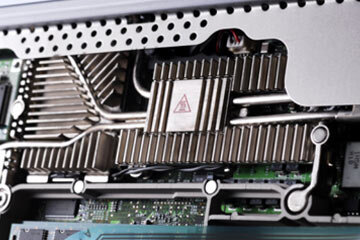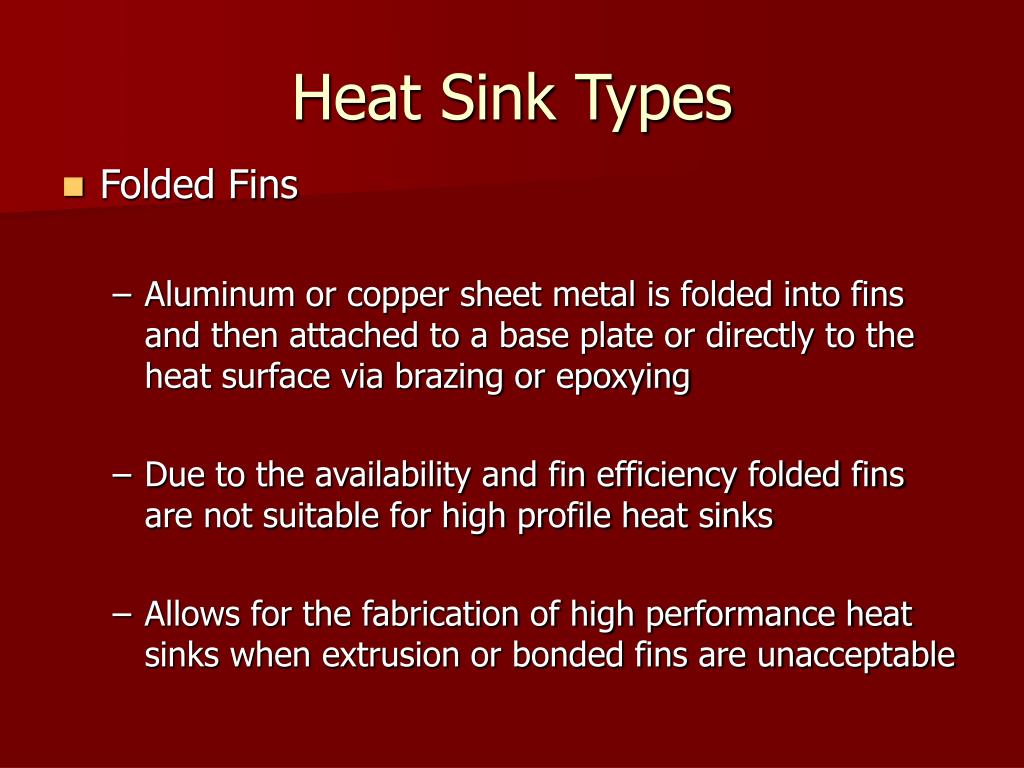Portable sink units portable kitchen sink cosmetology sink modern kitchen sinks healthcare portable sinks camping portable sink portable science sinks food and coffee cart portable sinks.
Heat sink types and design ppt.
The buoyancy effects of air forces hot air to move up and cold air to come down.
In computers heat sinks are used to cool cpus gpus and some chipsets and ram modules.
For the cooling purpose it incorporates a fan or cooling device.
In some heat sink data θca is lumped with the heat sink thermal resistance θsa.
Heat sink orientation natural convection.
When the heat sink utilizes fan hsf it is active heat sink.
Here in part 1 we ll talk about the following heat sink types.
Heat sinks are an important element in circuit design because they provide an efficient path for heat to be transferred into the ambient air and away from electronic devices eg.
The process is useful for most applications.
A heat sink also commonly spelled heatsink is a passive heat exchanger that transfers the heat generated by an electronic or a mechanical device to a fluid medium often air or a liquid coolant where it is dissipated away from the device thereby allowing regulation of the device s temperature.
Cooling fluid from the reservoir was pumped 1 through the flow meter 2 to the heat sink 3.
1 extruded heat sinks.
Types of heat sink active heat sink.
They are relatively inexpensive once a design is made the manufacturing is highly automated and in most cases aluminum is the material used.
Fin thickness and fin pitch are important factors to consider while optimising the heatsink.
The majority of heat sinks are made from extruded aluminum.
Heat sinks are made of metals like copper or aluminum alloy.
Heat sinks consist of fan or cooling device to disperse heat from another object.
The performance of extruded heat sinks can range from low to high.
In computers it is attached with a microprocessor chip to absorb heat and sends it to air.
Let s take a look at 6 common heat sink types.
25 comments on heat sinks used for natural convection.
When the heat sink is added the case thermal resistance θca is nearly doubled because its lower surface area is lost to the heat sink.
Extruded heat sinks are the utility infielder of our industry.
If the heat sink area is very large then very little heat will be dissipated through the case and θca can be ignored.
The general theory behind a heat sink is to increase the surface area of the heat producing device enabling a more efficient transfer of heat into the ambient environment.
Extruded heat sinks come at a low cost and custom specifications can be easily manufactured.
The mentioned heat sink is part of an experimental setup presented in fig.
Heat sink is an electronic component or a device of an electronic circuit which disperses heat from other components mainly from the power transistors of a circuit into the surrounding medium and cools them for improving their performance reliability and also avoids the premature failure of the components.
Extruded stamped bonded fin and folded fin.
Bjts mosfets linear regulators etc.



























